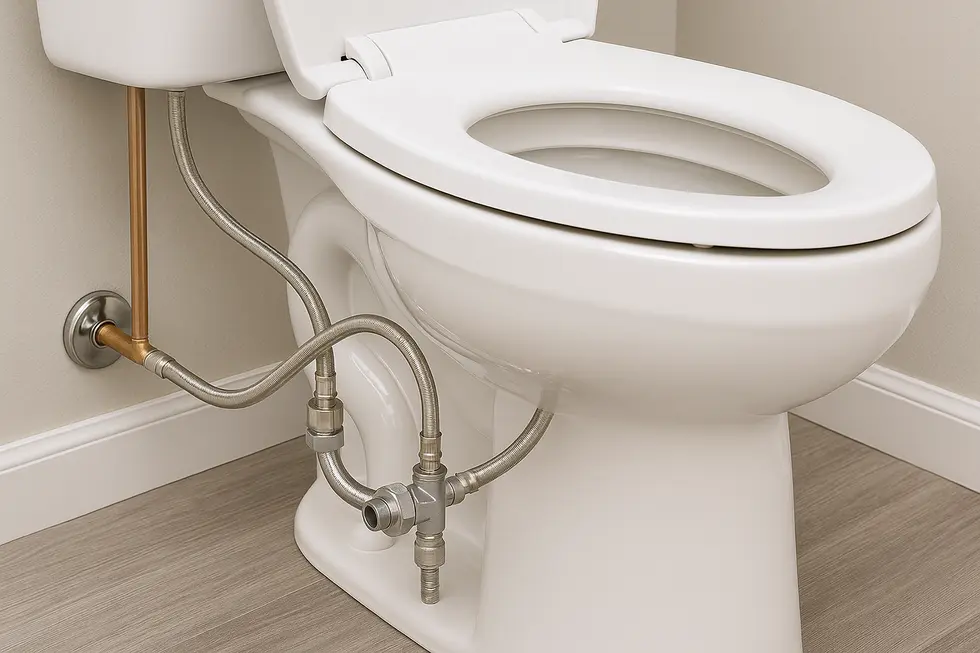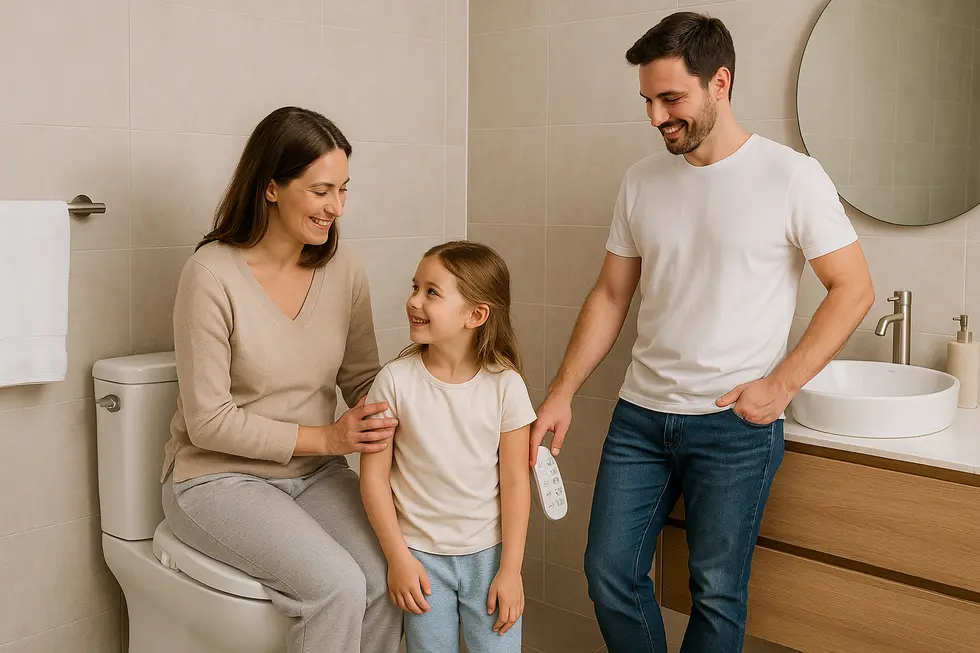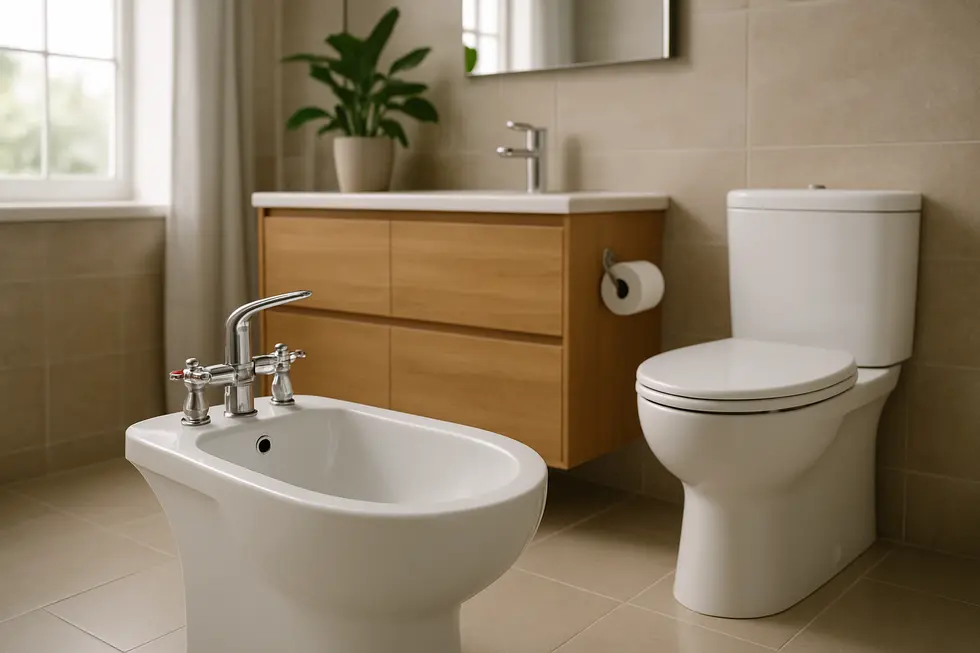Bidet Attachment
The Modern Family’s Guide to Hot and Cold Bidet Systems
Hot and cold bidet systems have revolutionized the way families approach bathroom hygiene, blending traditional cleansing techniques with modern technology for comfort and convenience. Offering adjustable temperature controls without the need for electricity, these systems present a perfect balance of innovation and practicality. This guide explores technological advancements, installation prerequisites, and the unmatched user experiences that make hot and cold bidets an essential addition to any modern family bathroom.
From Thermostatic Mixing to Smart Seats: The Technology Powering Modern Hot-Cold Bidets

Water temperature used to be a fixed variable in traditional bidets: you accepted whatever came from the nearest supply line. Contemporary hot-cold models replace that compromise with thermostatic mixing blocks that blend incoming hot and cold streams within fractions of a second. Because the valve constantly samples pressure on both lines, the spray remains steady even when someone turns on a nearby tap, preventing the jolting shifts that once discouraged timid users.
Instant-heating cartridges take comfort a step further. Instead of relying on the home’s water heater and a long pipe run, a compact copper coil energised by flow alone flashes water to the selected warmth in real time. Five-step dials are common, but digital panels can fine-tune to the exact degree, catering to sensitive skin and post-surgical care without electricity-hungry storage tanks.
Spray quality has evolved alongside temperature control. Engineers now inject microscopic air bubbles into the stream, softening the impact while increasing surface area for a quicker rinse. Paired with alternating warm-cool pulses, this aerated massage encourages better circulation and can ease discomfort from haemorrhoids or menstrual cramps. To keep the delivery path pristine, retractable stainless wands rinse themselves automatically before and after every cycle, flushing residual bacteria away with a brief hot burst.
Comfort outside the nozzle counts too. Heated seats lined with carbon-film pads ramp up to body temperature in under a minute and shut off once the user stands, preserving energy. Motion sensors can raise the lid, trigger a pre-heat, flush, and even send usage data to a companion app that tracks water savings versus paper habits. The same intelligence lets parents activate a child mode that lowers pressure and caps temperature.
Many of these advances are available as retrofit kits. Homeowners who install universal bidet attachments can now upgrade later with plug-and-play mixing valves, wand modules, or seat heaters without replacing the entire fixture. By layering modular components, a basic cold-water spray can grow into a fully personalised spa, proving that innovation in the bathroom needn’t demand a brand-new toilet. For readers curious about feature-rich models, see a detailed overview of smart bidet toilet features.
From Valve to Warmth: Plumbing the Perfect Hot-and-Cold Bidet Connection

Bringing adjustable warmth to your cleansing routine starts beneath the tank, where a few simple fittings create a pathway for both cold and hot water. Most toilets already have a shut-off valve that feeds the tank with cold water. Installing a dual-temperature bidet begins by removing the existing flexible hose and slipping a metal T-adapter onto that valve. One branch continues to the tank, the other becomes the bidet’s cold-water lifeline. A rubber washer inside the adapter and a neat wrap of plumber’s tape on every male thread are small details that prevent future drips.
The warm side is equally straightforward when a nearby sink or vanity supplies hot water. A second T-adapter threads onto the sink’s 3/8-inch hot line, then a heat-rated braided hose runs discreetly toward the toilet. Because hot water expands, these hoses use thicker inner liners and crimped brass collars; hand-tighten first, then give a gentle quarter-turn with an adjustable wrench. Route the hose so it never kinks behind the bowl, and add the supplied isolating clip if the manufacturer provides one—this keeps vibration to a minimum when pressure changes.
Seat-style units often mount with slide-in brackets that sit under the existing seat bolts, so the porcelain never needs drilling. Once the seat is secured, two quick-connect nipples accept the cold and hot hoses. Open both shut-off valves slowly while watching the connections; any bead of moisture means the washer is misaligned or the tape is missing.
Plumbing codes in most regions call for backflow protection whenever hot and cold lines intersect near a waste fixture. Certified T-adapters include an internal check valve that satisfies this rule, but always confirm local requirements before beginning work. A pressure test—simply leaving the valves open for an hour and running a dry tissue around each joint—provides peace of mind.
The entire process seldom exceeds thirty minutes for a confident DIYer, and even renters can reverse the steps without leaving marks. For step-by-step photos, tool lists, and troubleshooting tips, see this very helpful detailed installation guide. If you’re unsure whether your bathroom layout can accommodate the extra hose, our tutorial on installing a bidet on an existing toilet clarifies common space and valve configurations.
Warmth, Cool Relief, and Unmatched Cleanliness: How Dual-Temperature Bidets Transform Everyday Hygiene

The first sensation users notice with a hot and cold bidet is control. A simple twist instantly fine-tunes temperature from a brisk, awakening rinse to a spa-like warm cascade. This ability to personalise the wash does more than pamper—it protects delicate skin. Warm water relaxes muscles and dissolves residue, while a cooler finish calms any lingering irritation, a welcome combination for people managing hemorrhoids, postpartum tenderness, or chronic digestive flare-ups. Because cleansing is water-based, friction from dry paper all but disappears, cutting micro-abrasions that can invite infection.
Comfort quickly translates into confidence. Adjustable pressure lets each family member choose a gentle mist for children or a stronger jet after strenuous workouts. When paired with self-cleaning nozzles and optional air-dryers, daily visits become almost hands-free, reducing the transfer of bacteria and easing routines for users with limited mobility. Night-time trips are no longer a shock to the system; a pre-warmed seat and tempered spray keep the body relaxed, helping everyone drift back to sleep sooner.
The environmental story is equally compelling. Switching from paper to water saves trees, energy, and the litres of water hidden in tissue production. Households often report using up to 70 % less toilet paper, trimming both shopping bills and clogged-pipe woes. For renters or students, a non-electric attachment installs in minutes, sidestepping costly bathroom remodels while delivering luxury that rivals high-tech smart toilets.
Cumulatively, these gains change how the bathroom fits into busy lives. Morning routines move faster because the wash is thorough the first time; parents juggling toddlers value the quick clean-up; office workers appreciate midday freshness without occupying stall space for long. Even cultural hesitancy fades once guests try the soothing blend of warm and cool water—one reason awareness is rising, as outlined in PegaBidet’s overview of bidet attachment benefits.
Medical communities echo these observations. Obstetric nurses praise gentle warm washes for accelerating recovery, and gastroenterologists note fewer flare-ups in patients who adopt bidets (see Coway’s postpartum hygiene insights: https://cowaymega.com/pages/bidetmega). In short, a dual-temperature bidet is not merely a fixture; it is an everyday upgrade in cleanliness, comfort, and wellbeing.
Final thoughts
Hot and cold bidet systems are more than a luxury; they redefine personal hygiene and bathroom comfort, especially for families. Understanding their technological innovations, assessing installation needs, and recognizing their comfort advantages can greatly enhance daily life. As the demand for these systems grows, their role in promoting better personal hygiene for families becomes even more paramount. Experience a new standard of clean with PEGABidet—designed for comfort, safety, and independence. Join thousands who trust us to make personal care simple and dignified. Contact us contact@pegabidet.com
About us
PEGABidet is a brand owned by L.A NEXTGEN LLC, based in California. We design intuitive, hygienic, and accessible bathroom solutions that prioritize safety, dignity, and independence. Our mission is to make personal care effortless and empowering for people at every stage of life.

